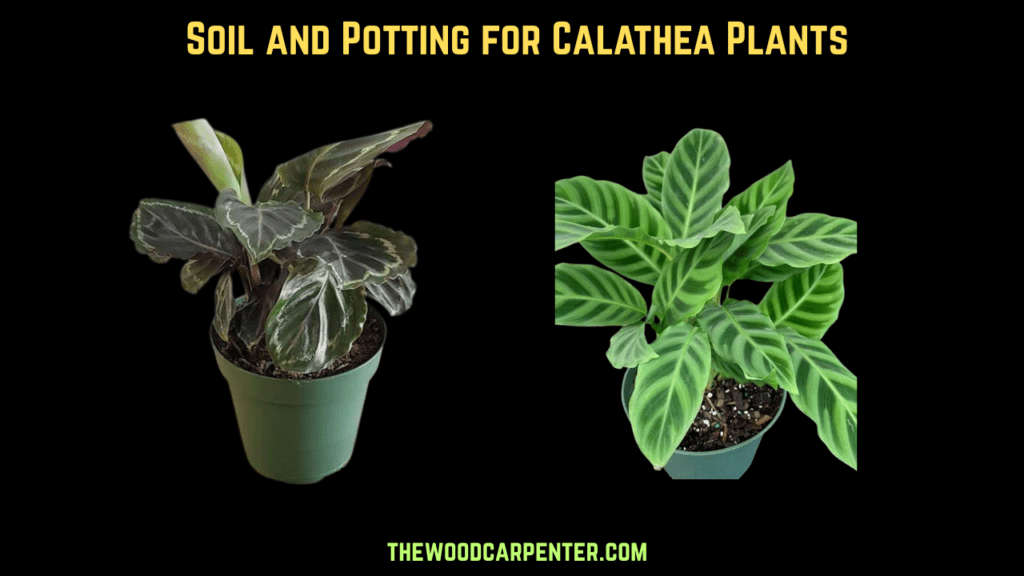
Introduction
If you’re looking for a beautiful, low-maintenance plant to add to your indoor garden, the Calathea plant might just be the perfect choice. Known for its striking, patterned leaves and air-purifying qualities, this tropical plant thrives indoors with the right care. But how do you grow and care for it?
In this guide, we’ll walk you through everything you need to know about growing Calathea plants indoors, from lighting and watering needs to repotting and pest control.
What is a Calathea Plant?
Calathea is a genus of flowering plants in the Marantaceae family, native to the tropical Americas. The plant’s most notable feature is its decorative leaves, which come in various shades of green with intricate patterns that resemble artwork. Calatheas are often referred to as “prayer plants” due to the way their leaves fold upward at night as if in prayer.
Varieties of Calathea Plants include:
- Calathea ornata (Pin-stripe Calathea)
- Calathea makoyana (Peacock plant)
- Calathea lancifolia (Rattlesnake plant)
Each variety has its own unique leaf pattern, making them an attractive addition to any home.
Why Choose Calathea for Indoor Gardening?
Calathea plants are ideal for indoor spaces for several reasons:
Aesthetic Appeal: The vibrant and intricate patterns on Calathea leaves bring a tropical touch to your home, adding color and texture.
Low Maintenance: Despite their exotic appearance, Calatheas are relatively easy to care for once you understand their basic needs.
Air Purifying: Like many other houseplants, Calatheas help improve indoor air quality by filtering out toxins and providing fresh oxygen.
Best Location for Your Calathea
When placing your Calathea indoors, consider the following:
Light Requirements: Calatheas prefer indirect light. Too much direct sunlight can cause their leaves to scorch, while too little light can slow growth. Place your plant near a window with sheer curtains or in a bright, shaded spot.
Temperature and Humidity: Calatheas thrive in warm and humid environments. The ideal temperature range is between 65°F to 80°F (18°C to 27°C). Keep them away from cold drafts or air conditioning. To maintain the necessary humidity, consider using a humidifier or placing a tray of water near the plant.
Also read:
Zebra Plants – Stunning Growth Secret Tips & Tricks !
Soil and Potting for Calathea Plants

The right soil and potting setup are crucial for the health of your Calathea.
Best Soil Mix: Calatheas prefer a light, well-draining mix. You can use a peat-based potting mix combined with perlite or coco coir to improve drainage. This will ensure the plant’s roots do not sit in water.
Potting Tips: Make sure to use a pot with drainage holes to prevent water from accumulating at the bottom. A slightly larger pot will give the roots room to grow, but avoid oversized pots as they can hold excess moisture.
Watering Your Plant
Watering is one of the most important aspects of Calathea care.
Watering Frequency: Calatheas like to be kept moist, but not soggy. Water your plant when the top inch of the soil feels dry to the touch. In general, you may need to water it about once a week, depending on the temperature and humidity levels.
Avoid Root Rot: To prevent root rot, ensure the soil drains well. Avoid letting the plant sit in standing water. If your water is hard or chlorinated, it may be best to let it sit for 24 hours before using it.
Fertilizing Calathea
To encourage healthy growth, fertilizing your Calathea is important:
Fertilizers to Use: Choose a balanced, water-soluble fertilizer with equal parts nitrogen, phosphorus, and potassium. You can also use a liquid houseplant fertilizer once a month during the growing season (spring and summer).
How Often to Fertilize: Avoid fertilizing in the winter when the plant is not actively growing. Over-fertilizing can lead to nutrient burn, so be sure to follow the instructions on the fertilizer package.
Humidity Needs
Calatheas thrive in high humidity, and it’s important to keep the air around them moist.
Importance of Humidity: Calathea plants are native to tropical rainforests, where humidity levels are high. If your home is too dry, you may notice the leaves starting to brown at the edges.
How to Increase Humidity: To increase humidity, you can:
- Use a humidifier in the room
- Mist the leaves lightly with water
- Place the pot on a tray of pebbles and water (ensure the pot doesn’t sit directly in the water)
Pruning and Cleaning Calathea
Pruning helps to keep your Calathea plant looking tidy and healthy.
How to Prune: Regularly trim away dead or damaged leaves to encourage new growth. Use sharp, clean scissors to cut the leaves at the base.
Cleaning the Leaves: Calathea leaves can collect dust, so gently wipe them with a damp cloth. This helps the plant breathe better and enhances its appearance.
Common Pests and Problems with Calathea
While Calatheas are relatively hardy, they are susceptible to a few common pests and problems:
Common Pests: Mealybugs, spider mites, and aphids can infest Calathea plants. If you notice sticky residue or webbing, check for pests and treat with insecticidal soap or neem oil.
Browning Leaves: This is often a sign of low humidity or overwatering. Check the moisture level in the soil and adjust your care routine.
Repotting
As Calathea plants grow, they may need repotting:
Signs It’s Time to Repot: If your plant becomes root-bound (roots growing out of the drainage holes), it’s time to repot. Typically, Calatheas should be repotted every 2 to 3 years.
Steps for Repotting: Choose a pot that is 1-2 inches larger in diameter than the current one. Gently remove the plant from its pot, loosen the roots, and place it in fresh soil. Water thoroughly after repotting.
How to Propagate Calathea
Propagation allows you to grow new Calathea plants.
Step-by-Step Propagation: The most common method is division. Simply divide the plant into smaller sections with roots, and repot them into their own containers with fresh soil.
Tips for Successful Propagation: Make sure each section has a healthy root system and place it in a warm, humid spot until it establishes new growth.
Plant Troubleshooting
Wilting Leaves: Check for signs of overwatering or underwatering. Ensure the plant is getting the correct amount of light.
Yellowing Leaves: This can be caused by low humidity or excessive fertilizing. Adjust the watering and humidity levels.
Seasonal Care for Calathea
In colder months, Calatheas may slow down their growth. Adjust your care routine:
Reduce Watering: In winter, Calatheas need less water as they are not actively growing.
Keep Warm: Ensure your Calathea stays in a warm spot, away from cold drafts.
Conclusion
Caring for Calathea plants indoors is not only about providing the right environment but also paying attention to small details. With the proper care—correct light, humidity, and watering—you can enjoy this stunning plant in your home.
Remember to prune, fertilize, and repot when necessary to maintain its vibrant foliage. By following these steps, your Calathea will reward you with lush, colorful leaves for years to come.
FAQs
1. How often should I water my Calathea plant?
Water your Calathea when the top inch of soil feels dry. On average, this might be once a week, but it depends on environmental factors like humidity.
2. Why are the leaves of my Calathea turning brown?
Brown leaves are usually a sign of low humidity or overwatering. Try increasing the humidity or adjusting your watering schedule.
3. Can I use tap water for my Calathea?
If your tap water is hard or chlorinated, it’s better to let it sit for 24 hours before using it. Alternatively, use distilled water.
4. How do I propagate Calathea plants?
The easiest way to propagate Calathea is by dividing the plant into smaller sections during repotting, ensuring each section has a healthy root system.
5. What should I do if my Calathea gets pests?
If pests like aphids or spider mites appear, treat your plant with insecticidal soap or neem oil to eliminate the problem.

